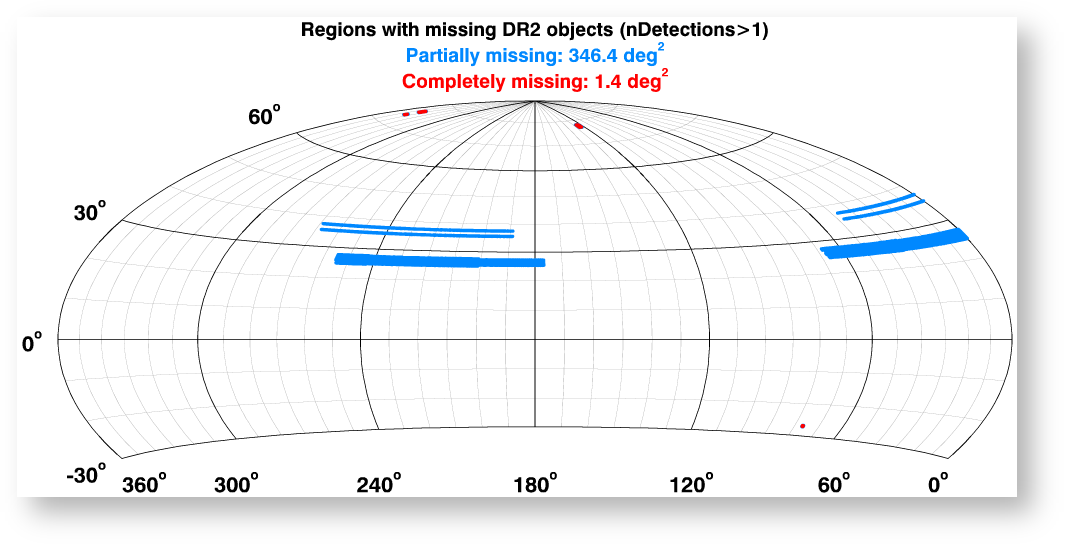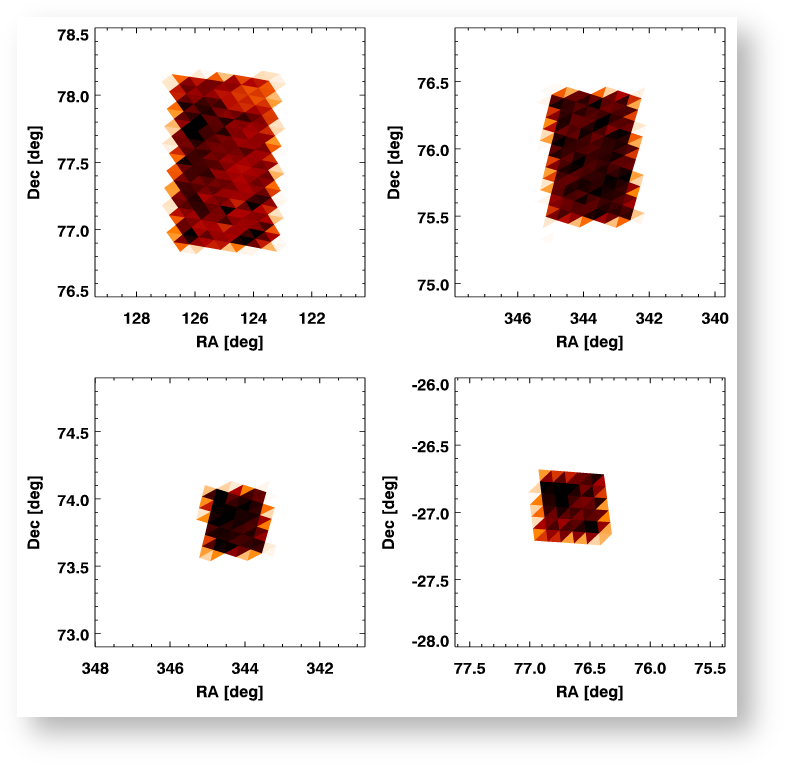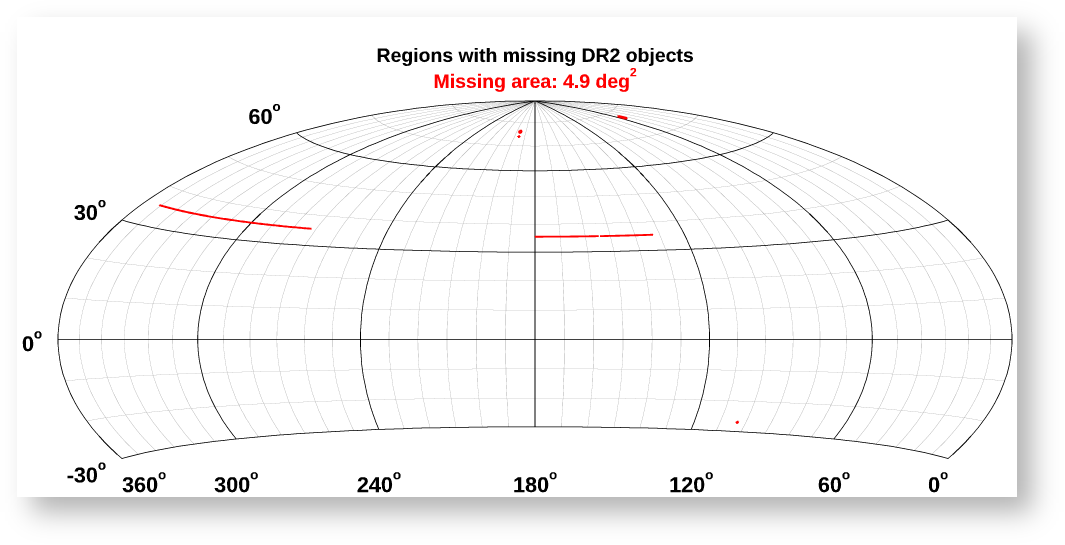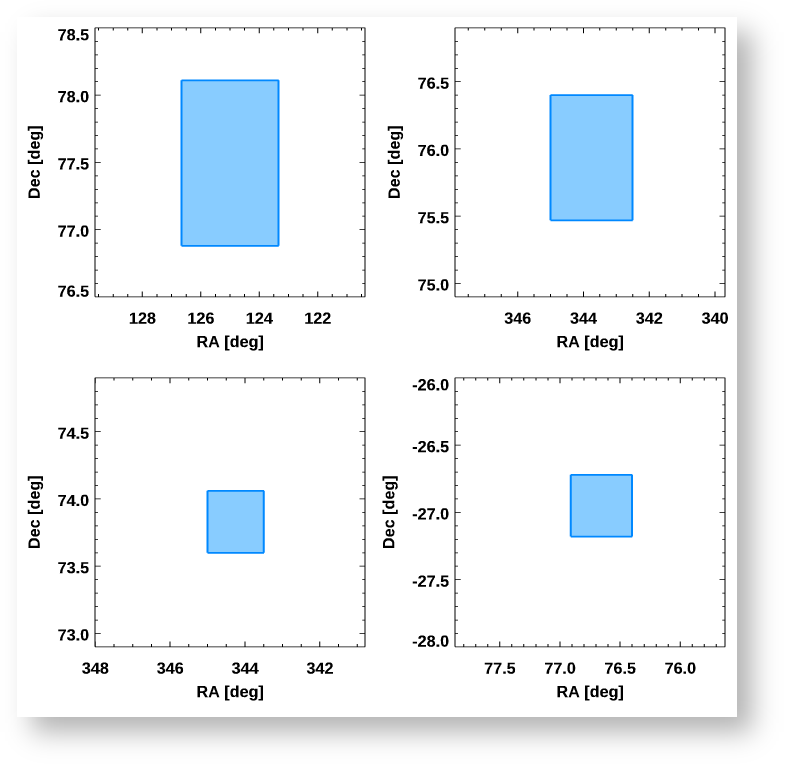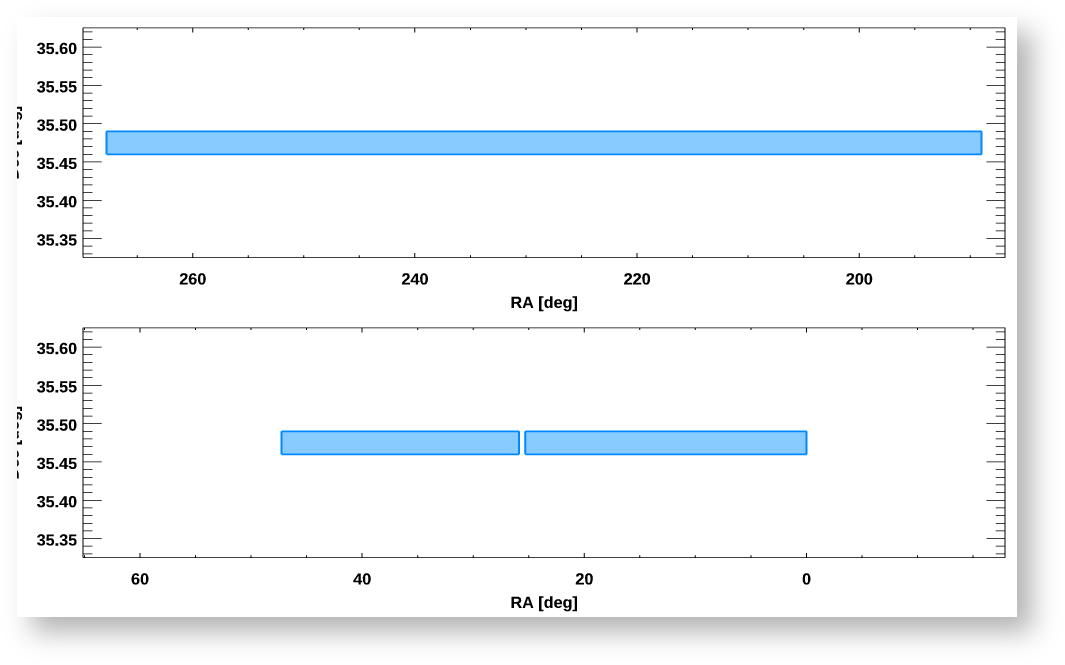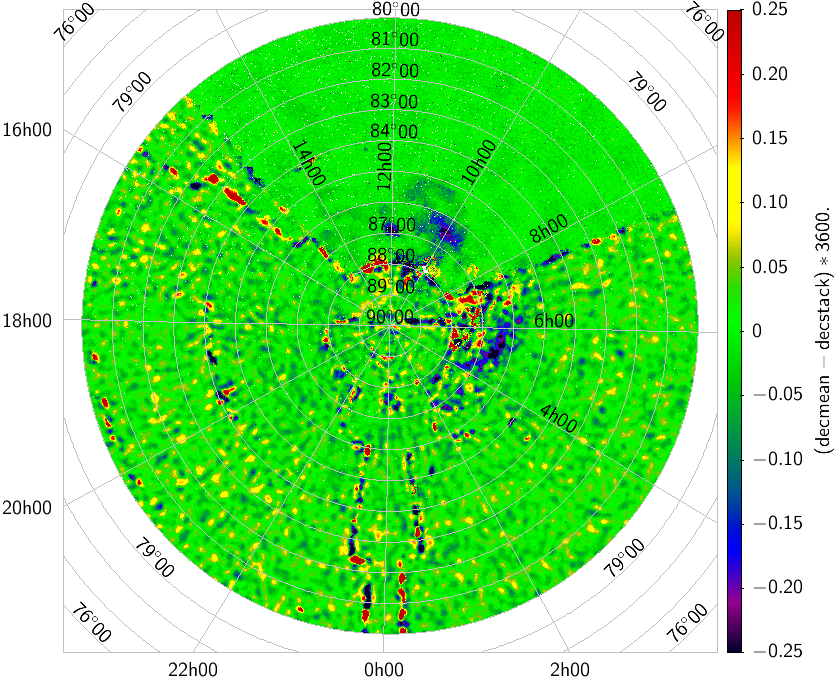Page History
...
| Excerpt |
|---|
Users of the current PS1 DR2 data should be aware of a few issues and inconsistencies in the data.
|
| Tip | ||||||
|---|---|---|---|---|---|---|
| ||||||
|
...
The current version of the database (released 2019 January 28) is missing data over about 10.1% 016% of the survey (346 4.9 square degrees). The missing regions lie in areas where either no sources were ingested into the ObjectThin table (only ~1.5 sq deg), where the StackObjectThin objects were not added (~4.1 sq deg), or . Note that an earlier issue where the MeanObject objects are were missing (~341 sq deg). For the stack objects, the object entries are missing in ObjectThin, but they are present in StackObjectThin (and other stack tables). For the missing mean objects, the problem is that there are entries in ObjectThin but the corresponding magnitude information is missing from MeanObject. The effective result is that the objects do not show up in searches if any magnitudes or other properties are required (which is the usual case.)over a much larger area) has been fixed.
The figures below show where data are missing. The first figure shows a schematic plot with the locations of missing data. The other two plots show closeups with more detail. The most noticeable missing areas are long narrow strips in declination. The approximate boundaries of the missing data in declination strips are given in the table below.
...
The declination cut was not applied in a narrow RA strip between 214 and 216 degrees. In that region the catalog extends down to declination -36 deg. There some tables where additional information can be found on objects south of -30 deg (e.g., the Detection table). This data is unlikely to be of good quality due to uneven sky coverage. For most purposes data south of -30 deg should be ignored.
| Boundaries of regions with missing data | |||
|---|---|---|---|
| min(Dec) [deg] | max(Dec) [deg] | min(RA) [deg] | max(RA) [deg] |
| 35.46 | 35. |
| 499 | 189.0 | 267.7 |
| 35.46 | 35. |
| 499 | 0.0 |
| 25. |
Figure showing regions where all objects are missing (red) and some objects are missing (blue).
Figure showing closeups of the density of missing objects in the small holes.
...
| 31 | |||
| 35.46 | 35.499 | 25.88 | 47.25 |
| 76.88 | 78.11 | 123.34 | 126.66 |
| 75.47 | 76.40 | 342.51 | 345.00 |
| 73.60 | 74.06 | 343.50 | 345.00 |
| -27.18 | -26.72 | 76.40 | 76.91 |
Figure showing regions where objects are missing.
Figure showing closeups of small holes with missing objects.
Figure showing details of missing declination strips. The top narrow strip is from missing stack objects,
while the other two are missing MeanObject entries. Note that the wide strip varies in declination widthNote the strips are narrow, so the y-scale is much different than the x-scale.
Astrometry differences between stack and mean positions
...
The warp catalogue positions (and therefore ramean and decmean) are not affected, as these have been re-calibrated to Gaia (except possibly for the slice indicated in the figure below), However, the stack catalogue positions (rastack, decstack, and the individual stack positions for each band) may be in error, and may differ between bands.
This image indicates the extent of the problem. It shows the median difference between decmean and decstack values in DR1 above 80 deg Declination (for objects with 16<ipsf<20). The colour range spans offsets of +/-0.25". Areas coloured blue or red should be treated with caution. The general mottling effect at the +/-0.1" level is due to the Gaia recalibration of the warp (but not stack) catalogue positions. The smooth, wedge-shaped section between 7h and 15h is believed to be a region where the Gaia recalibration of the warps did not make its way into DR1. It extends down to +75 deg. This will be corrected in DR2. |
|---|
Our intention is to produce corrected images and new, separate, polar region catalogues for DR2.
FITS image format quirks
The FITS images have several unusual characteristics. They are described in more detail in the image cutout documentation. We may fix this at some time in the future, but since we have 2 petabytes of PS1 FITS images, this is unlikely to be done soon.
...
Another issue with the image astrometry is that the full skycell FITS images do not have a RADESYS keyword. That leads some software to incorrectly interpret the coordinates as being equinox 1950 rather than equinox 2000. At the moment the only known software with this issue is DS9 v8, but it could happen with other software as well. The fix is to insert the keyword RADESYS = 'FK5' in the header. FITS cutout images have a correct RADESYS keyword (as of 2019 March 13), but full skycell FITS images do not.
Yet another header issue with the observation times are given as international atomic time (TAI) rather than UTC time. Those times differ by the addition of leap seconds, which leads to header times that differ by 34 or 35 seconds from the UTC times. (See Rots et al. 2015 for more details.) The fix for this is to insert the keyword TIMESYS = 'TAI' in the header. FITS cutout images have a correct TIMESYS keyword (as of 2022 January 20), but full skycell FITS images do not. This is important if you care about timing at an accuracy of 30 seconds. Thanks to Peter Van Wylen for discovering this issue and identifying the fix.
The stack image pixel values have been non-linearly scaled using an arc hyperbolic sine (asinh) transformation that converts them to a pseudo-magnitude scale related to the asinh magnitudes (aka "luptitudes") that are used in the Sloan Digital Sky Survey. The scaling is determined by the BSOFTEN/BOFFSET keywords in the FITS header. Here are the relevant lines from the header of the skycell 1725.051 g-band image:
...
The asinh flux scaling also applies only to the full skycell FITS images – FITS cutout images are converted to standard linear fluxes. Also note that the asinh transformation is applied only to the stacked images. The single-epoch warp images do not use asinh scaling. Check for the presence of the BSOFTEN and BOFFSET keywords in the header to determine whether or not the sinh correction is required.

